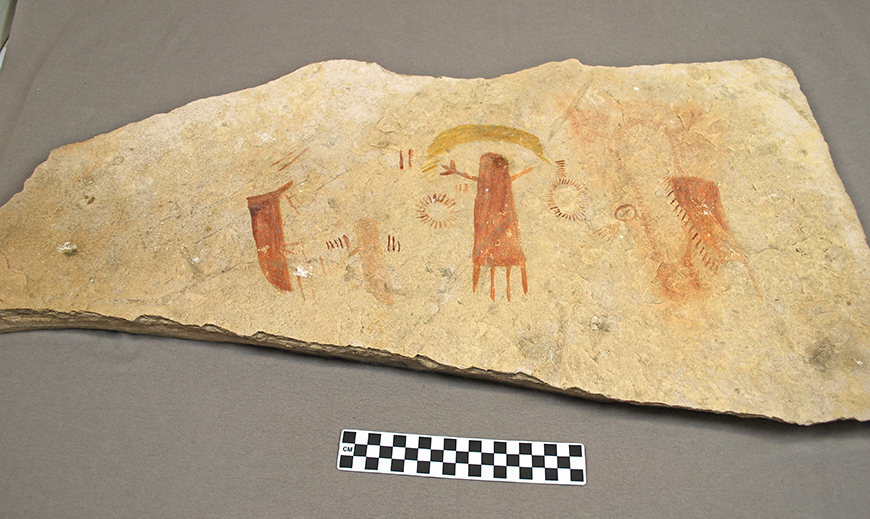This is a reproduction of a piece of cave art found at Bonfire Shelter in Eagle Cave near Langtry, Texas. Eagle cave is located in Mile Canyon, commonly referred to as Eagle Nest Canyon, which is a tributary canyon of the Rio Grande entering on the north side of the river just downstream from Langtry, Texas. Eagle Canyon gets its name from a pair of nesting eagles in the region. The canyon has been an important area of many archaeological and geological expeditions over the past century due to the region’s rich history of early human inhabitants and rock art.
Cave paintings are found across the world from state-parks in North America, to Europe, Africa, Asia and Australia. Often these cave paintings outline stories of hunting and gathering, fishing, or natural disasters. The Lower Pecos region in southwest Texas is home to several examples of rock art from Texas’s ancient past. In fact, many of the paintings found in these caves give us a glimpse of the type of animals that were around during the time of these ancient peoples. It is possible that some of these paintings were made by the Clovis people who inhabited Texas during the time when the woolly mammoths roamed the earth, 11,000 years ago. These ancient Texas inhabitants hunted Woolly Mammoths and other creatures for food, clothes, and tools. They would have used caves, ridges, or bluff shelters, like the one shown on the right, to protect themselves from weather and animals.
Paints made were by mixing plants and/or animal blood with different types of clay and dirt. For example, the paint for many red cave markings is made with iron oxide called red ochre, a pigment found in many medieval art works. The ancient artists would use their hands, fingers, or objects from the ground to create shapes on the wall. They also would have used animal hair and bones from the animals that they hunted for brushes or as tools to carve into the rock wall. The ancient indigenous people were very interested in the animals they hunted depicting some possible traits of the Animism religion which dates to the Stone Age.
Sadly, many of the paintings are being destroyed by time, weathering, and treasure hunters. In Seminole Canyon State Park, located in Texas, the Parks and Wildlife Services had partnered up with archaeologists in hope of preserving these natural time capsules by way of 3D scanning of the caves and rock faces. As well as, in Eagle Nest Canyon where Texas State University has an ongoing dig site to help preserve some ancient indigenous artifacts. This is also going on in other parts of the world, such as Australia’s outback.
Australian rock art, created by ancient Aborigines, predates that of North American rock art by thousands of years. The ancient aborigines, like the Clovis people of America, also depicted hunting animals and fishing in their paintings. These ancient people would paint or engrave lines, circles, and patterns to create scenes of humans, reptiles, fish, and whales in the stone. Today, decedents of these ancient people keep up with the traditions of their ancestors by painting in the same method but on canvas.
